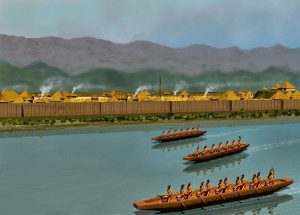Biography of Rev. William F. McIntosh
William F. McIntosh was born near the line of Alabama and Georgia, November 12, 1824, the second son of Chilly McIntosh, of great reputation, and grandson of old General McIntosh. His mother was Miss Porter, whose parents emigrated at an early day from Pennsylvania to Alabama. William F. attended a neighborhood school when twelve years of age, and in 1837 went to Coweta Mission, where he remained one season, after which he commenced assisting his father in agriculture, until he married Miss Eliza Ilands, January 8, 1848, by whom he had six children, two of whom are living. Sarah and … Read more




